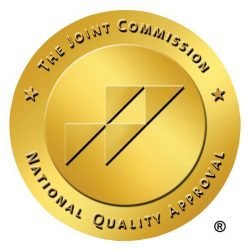
Different Types of Eating Disorders: Recognizing the Symptoms and Statistics
Table of Contents:
- What are the Different Types of Eating Disorders
Eating disorders tend to hide in plain sight. There are several types of eating disorder diagnoses and clinical subcategories of disordered eating, and none of them discriminate by gender or body type. Some people may ignore their symptoms for years simply because they do not “fit” their preconceived notion of what an eating disorder looks like.
Eating disorders are dangerous, biologically and socially influenced mental illnesses that impact people of all ages, racial/ethnic backgrounds, body weights, and genders. Although characterized by severe disturbances to eating behavior, eating disorders are about more than food. These life-threatening illnesses often co-occur with other mental health conditions, including mood and anxiety disorders, PTSD, and substance use disorders.
What are the Different Types of Eating Disorders?
Eating disorders are complex mental illnesses. While some eating issues may not meet the diagnostic criteria for the conditions described below, we believe all eating concerns should be taken seriously and are worthy of care.
Many eating disorder symptoms have become all but normalized due to diet culture’s influence, making them challenging to validate and causing delays in receiving treatment, which is dangerous given the increased health risks.
Anorexia Nervosa
Anorexia Nervosa is an eating disorder characterized by food restriction, significant weight loss, and distorted body image. It has one of the highest mortality rates of any mental illness.
What are the Physical Symptoms of Anorexia?
- Extreme weight loss
- Muscle weakness or loss
- Fatigue
- Insomnia
- Dizziness
- Low blood pressure
- Swollen joints
- Decrease in body temperature
- Damaged digestive system from malnutrition
- Poor wound healing
- Abnormal heartbeat rhythm
- Thinning hair
What are the Behavioral and Emotional Symptoms of Anorexia?
- Isolation from family or friends
- Withdrawing from social activities once enjoyed
- Preoccupation with food or calorie counting
- Difficulties concentrating on tasks or conversations
- Visible anxiety
- Excessive exercise
- Food restriction
- Not wanting to eat in public
- Irritability
Bulimia Nervosa
Bulimia is characterized by recurrent episodes of binge eating followed by compensatory measures such as vomiting, excessive exercise, fasting, or laxative misuse.
What are the Physical Symptoms of Bulimia?
- Dehydration/electrolyte imbalance
- Exhaustion
- Irregular heart rhythm
- Chronic sore throat
- Oral problems, such as tooth decay and gum disease
- Thinning hair
- Sores, scars, or calluses on the knuckles or hands
- Weight fluctuation
- Swollen cheeks or jawline
What are the Behavioral and Emotional Symptoms of Bulimia?
- Going to the bathroom right after eating
- Depression
- Anxiety
- Excessive exercise
- Hiding food
- Eating unusually large quantities of food in one setting
- Obsession with body image
- Worrying about weight
- Social withdrawal
Binge Eating Disorder (BED)
Binge Eating Disorder is characterized by the frequent and recurring consumption of a large amount of food – often quickly, in secret, and past the point of discomfort. There is also a sense of loss of control in relation to the amount of food consumed.
BED is the most common eating disorder in the United States and one of the newest disorders to be recognized in the DSM-5.
What are the Physical Symptoms of BED?
- Frequent stomach aches
- Digestive problems
- Rapid weight gain
- Weight fluctuation
- Increased sensitivity to food cravings
- Fatigue
What are the Behavioral and Emotional Symptoms of BED?
- Inability to stop eating when full
- Eating normally in the presence of others but binging when isolated
- Feelings of numbness or lack of sensation while binge eating
- Feelings of shame or self-hate after binge episodes
- Stockpiling food to consume when alone
- Experiencing the feeling of stress or anxiety that can only be relieved by eating
- Never feeling satisfied when eating, no matter the amount of food consumed
- Frequent dieting, with or without weight loss
Recovery is possible. Read on to learn how Alsana can help recover from binge eating disorder.
Other Specified Feeding or Eating Disorder (OSFED)
OSFED is a diagnostic category for eating disturbances (such as atypical anorexia) in individuals whose symptoms do not meet the criteria for another eating disorder.
OSFED replaced EDNOS as a diagnosis, Other specified feeding or eating disorder (OSFED) is a subclinical DSM-5 category that, along with unspecified feeding or eating disorder (UFED), replaces the category formerly called eating disorder not otherwise specified (EDNOS) in the DSM-IV-TR.
OSFED is no less serious than other eating disorders and is the most common eating disorder encountered in outpatient settings.
What are the Physical Symptoms of OSFED?
- Fatigue
- Dizziness
- Headaches
- Constipation and stomach aches
- Irregular heart rhythms
- Fainting spells
- Dental cavities
- Dry skin
- Thinning hair or balding patches
What are the Behavioral and Emotional Symptoms of OSFED?
- Demonstrate behaviors and attitudes showing weight loss, dieting, and control of food as primary concerns
- Feeling overweight despite weight loss
- Denies feeling hungry
- Evidence of purging behaviors such as frequent bathroom visits after meals and signs of vomiting.
- Development of food rituals (e.g. eating only a particular food or food group)
- Obsession with food cleanliness or exercise
- Withdraws from usual social engagements and activities
- Abdominal pain or digestive issues
- Negative body image and low self-esteem
- Evidence of binge eating
- Loss of control when eating, including impulsive or irregular eating habits
Avoidant/Restrictive Food Intake Disorder (ARFID)
Avoidant Restrictive Food Intake Disorder (ARFID) is a feeding disorder in which certain foods are limited based on texture, smell, taste, or past negative experiences with food.
ARFID is an eating disorder with symptoms and health risks similar to those of anorexia; both eating disorders involve intense dietary restrictions. However, ARFID is unique because it is not characterized by fear of weight gain or disturbed body image. Individuals struggle to nourish themselves adequately. On the surface, ARFID symptoms may look like “picky eating,” but individuals with ARFID may have fears of choking or extreme sensitivities to texture or taste.
What are the Physical Symptoms of ARFID?
- Bloating
- Nausea
- Swollen feet
- Poor wound healing
- Feeling cold all the time
- Muscle weakness
- Stomach discomfort after eating
- Difficulty gaining weight
- Fainting episodes or lightheadedness
- Difficulty chewing or swallowing food
What are the Behavioral and Emotional Symptoms of ARFID?
- Fears of choking or vomiting
- Difficulty eating with others
- Limited range of preferred foods that become narrower over time (i.e., picky eating that progressively worsens)
- Lack of appetite or interest in food
- No body image disturbance or fear of weight gain
ARFID is not just a childhood eating disorder. Learn more about ARFID symptoms in adults.
Diabulimia (ED-DMT1)
Diabulimia is a condition impacting individuals with insulin-dependent diabetes who intentionally restrict insulin for the purpose of weight loss.
What are the Physical Symptoms of Diabulimia?
- A sudden decrease in body weight
- Dehydration
- Dizziness
- Fatigue
- Irregular heartbeats
- Chronic low blood sugar levels
- Vision loss
- Kidney damage
- Nerve damage causing tingling or numbness in extremities
- Skin disorders
What are the Behavioral and Emotional Symptoms of Diabulimia?
- Changes in eating habits
- Obsession with body image, weight, or food intake
- Irritability
- Anxiety
- Purging behaviors
- Unwillingness to attend medical appointments
- Avoiding situations that require eating
What are the Statistics Surrounding the Eating Disorder Types?
Eating Disorders and Health Risks
- 9% of the U.S. population will have an eating disorder in their lifetime.
- About 26% of people with eating disorders attempt suicide.
- Less than 6% of people with eating disorders are medically diagnosed as “underweight.”
- Only one-third of individuals struggling with anorexia nervosa in the United States obtain treatment.
- Disordered eating has increased across all demographics, but even faster for older people, males, and people with a lower socioeconomic status. The researchers noted “the ‘democratization’ of disordered eating.
- Up to 50% of individuals with eating disorders abused alcohol or illicit drugs, a rate five times higher than the general population.
Eating Disorders in Women
- 85-95% of anorexia nervosa and bulimia nervosa patients are female.
- Teen girls between 15 and 19 and young women in their early 20s are most at risk for for suffering from Bulimia.
- Women have 1.75-3 times as high lifetime prevalence for anorexia, bulimia, or BED as compared to men.
- Over 60% of women in the military who were surveyed met the criteria for an eating disorder. For Marine Corps respondents, 97.5% met the criteria for an eating disorder diagnosis.
- In a study of Division 1 NCAA athletes, over one-third of female athletes reported attitudes and symptoms, placing them at risk for anorexia nervosa.
Eating Disorders in Men
- Subclinical eating-disordered behaviors (including binge eating, purging, laxative abuse, and fasting for weight loss) are nearly as common among males as in females.
- Men are three times more likely than women to have subthreshold BED. This means that disordered eating is significant but does not meet all the criteria for an official diagnosis.
- Men are likely underdiagnosed with eating disorders because clinical assessment tools emphasize a desire to lose weight instead of building muscle.
- Males make up 25% of people with anorexia. Because they are often diagnosed later than females, they are at higher risk of dying.
- Although eating disorders affect a higher proportion of males who identify as gay or bisexual than females, most males with eating disorders are heterosexual.
Eating Disorders in BIPOC Populations
- BIPOC with eating disorders are half as likely to be diagnosed or to receive treatment as white people.
- Asian, Black, Hispanic and Caucasian youth all reported attempting to lose weight at similar rates, while among Native American adolescents, 48.1% were attempting weight loss.
- Black teenagers are 50% more likely than white teenagers to exhibit bulimic behavior, such as binge eating and purging.
- Asian American college students report higher rates of restriction than their white peers and higher rates of purging, muscle building, and cognitive restraint than their white or non-Asian, BIPOC peers.
- Research shows that 20-26% of those affected by eating disorders are BIPOC people, indicating that BIPOC people are as likely as their white counterparts to develop eating disorders.
Eating Disorders in the LGBTQ+ Community
- 35% of young adult transgender men have been shown to report high rates of binge eating.
- LGBTQ young people experience significantly greater rates of both eating disorders and attempting suicide compared to their heterosexual and cisgender peers.
- Gay males are thought to only represent 5% of the total male population, but among males who have eating disorders, 42% identify as gay.
- Researchers have found that more than half of young LGBTQ people between the ages of 13 and 24 have been diagnosed with an eating disorder.
- Of all the LGBT subgroups, research findings regarding the rates of eating disorders and disordered eating behaviors among lesbian adults and adolescents are the least consistent.
We hope this brings some clarity to the different types of eating disorders. If you are someone who is being walked past, know that you are not alone. Perhaps you hold a great deal of shame around your eating behaviors or even think your struggles are invalid because they don’t fit the typical mold. Please do not let that deter you from getting help. Your pain matters and deserves to be heard. There is help available.

Live Chat

FREE ED Assessment Survey
Our Recommended Articles
Sources:
Eating disorders. Cleveland Clinic. (n.d.). Retrieved February 9, 2023, from https://my.clevelandclinic.org/health/diseases/4152-eating-disorders#symptoms-and-causes
van Eeden, A. E., van Hoeken, D., & Hoek, H. W. (2021, November 1). Incidence, prevalence and mortality of anorexia nervosa and bulimia nervosa. Current opinion in psychiatry. Retrieved February 10, 2023, from https://www.ncbi.nlm.nih.gov/pmc/articles/PMC8500372/
Stice, E., Marti, C. N., & Rohde, P. (2013, May). Prevalence, incidence, impairment, and course of the proposed DSM-5 eating disorder diagnoses in an 8-year prospective community study of Young Women. Journal of abnormal psychology. Retrieved February 10, 2023, from https://www.ncbi.nlm.nih.gov/pmc/articles/PMC3980846/
Health, D. of P. (n.d.). Epidemiology of binge eating disorder: Prevalence, course,… : Current opinion in psychiatry. LWW. Retrieved February 10, 2023, from https://journals.lww.com/co-psychiatry/Abstract/2021/11000/Epidemiology_of_binge_eating_disorder__prevalence,.3.aspx
A;, M. L. L. V. L. K.-R. (n.d.). Other specified and unspecified feeding or eating disorders among women in the community. The International journal of eating disorders. Retrieved February 10, 2023, from https://pubmed.ncbi.nlm.nih.gov/27442991/
Norris, M. L., Spettigue, W. J., & Katzman, D. K. (2016, January 19). Update on eating disorders: Current perspectives on avoidant/restrictive food intake disorder in children and Youth. Neuropsychiatric disease and treatment. Retrieved February 10, 2023, from https://www.ncbi.nlm.nih.gov/pmc/articles/PMC4725687/
Blinder, B. J., & Salama, C. (2008). An update on Pica: prevalence, contributing causes, and treatment. Psychiatric Times, 25(6), 66. https://link.gale.com/apps/doc/A180317253/AONE?u=anon~928fa784&sid=googleScholar&xid=8fbaad4f
A meta-analysis of the worldwide prevalence of Pica during pregnancy … (n.d.). Retrieved February 10, 2023, from https://www.researchgate.net/profile/Emily-Fawcett-5/publication/291523513_A_meta-analysis_of_the_worldwide_prevalence_of_pica_during_pregnancy_and_the_postpartum_period/links/573e24e808ae298602e6dfbc/A-meta-analysis-of-the-worldwide-prevalence-of-pica-during-pregnancy-and-the-postpartum-period.pdf
W.B. Saunders. (2021, November 11). Global prevalence and impact of rumination syndrome. Gastroenterology. Retrieved February 10, 2023, from https://www.sciencedirect.com/science/article/abs/pii/S0016508521037306
Watson RJ, Veale JF, Saewyc EM. Disordered eating behaviors among transgender youth: Probability profiles from risk and protective factors. Int J Eat Disord 2017;50(5):515–22.
Hoek and van Hoeken,2003. Review of the prevalence and incidence of eating disorders. International Journal of Eating Disorders, 386-396.
Mond, J.M., Mitchison, D., & Hay, P. (2014) “Prevalence and implications of eating disordered behavior in men” in Cohn, L., Lemberg, R. (2014) Current Findings on Males with Eating Disorders. Philadelphia, PA: Routledge.
Johnson, C. Powers, P.S., and Dick, R. Athletes and Eating Disorders: The National Collegiate Athletic Association Study, Int J Eat Disord 1999; 6:179.
Strother, E., Lemberg, R., Stanford, S. C., & Turberville, D. (2012). Eating Disorders in Men: Underdiagnosed, Undertreated, and Misunderstood. Eating Disorders, 20(5), 346-355. doi:10.1080/10640266.2012.715512
Kilpatrick, Ohannessian, & Bartholomew, 1999
Becker, A. E., Franko, D. L., Speck, A., & Herzog, D. B. (2003). Ethnicity and differential access to care for eating disorder symptoms. International Journal of Eating Disorders, 33(2), 205-212. doi:10.1002/eat.10129
Uri, R. C., Wu, Y., Baker, J. H., & Munn-Chernoff, M. A. (2021). Eating disorder symptoms in Asian American college students. Eating Behaviors, https://doi.org/10.1016/j.eatbeh.2020.101458
Johns et al., 2020; Parker & Harriger, 2020
Start the road to recovery with Alsana.







